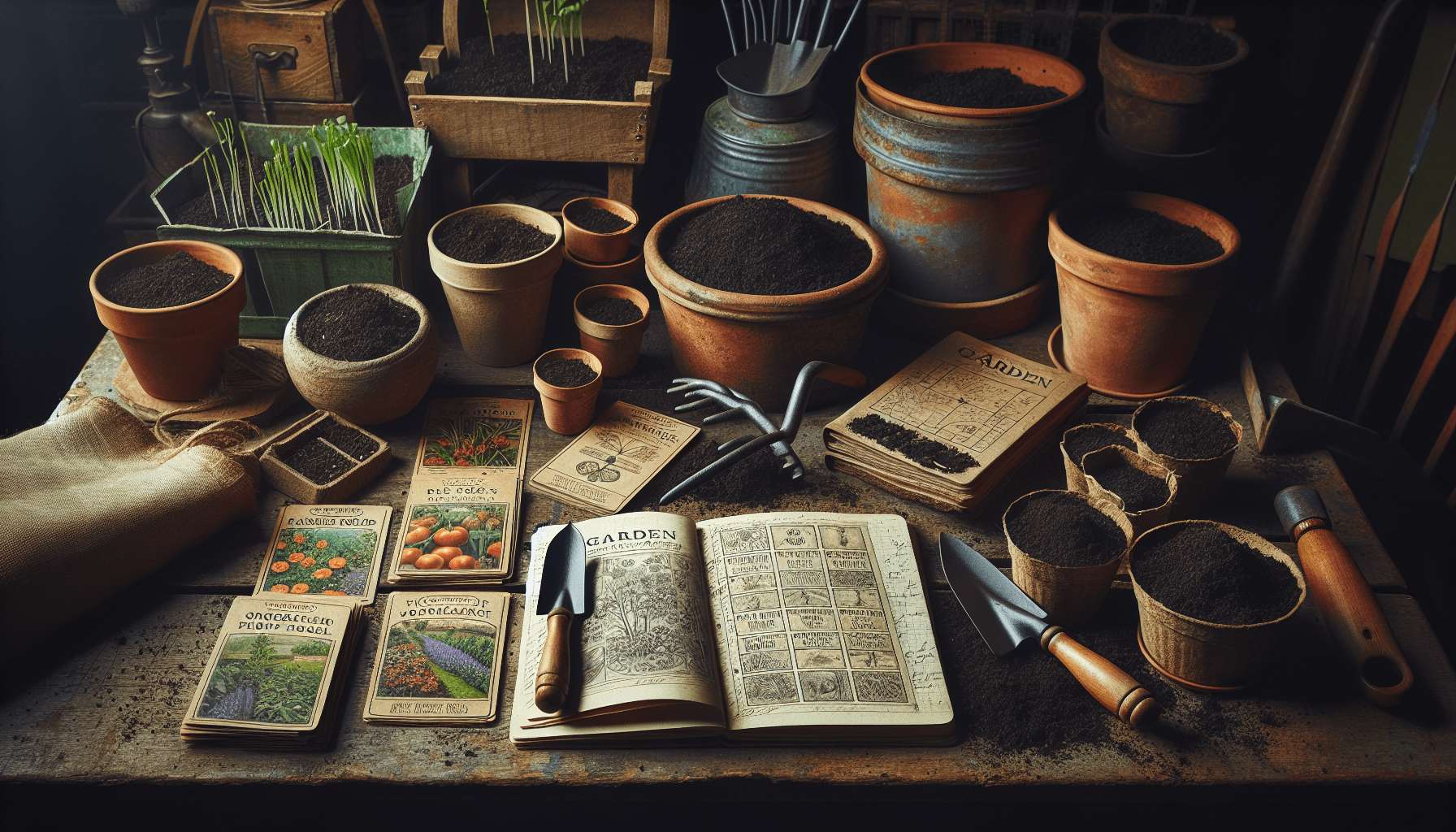This post may contain affiliate links which means I may receive a commission for purchases made through links. Learn more on my Private Policy page.
In “Top 5 Planting Materials For A Successful Harvest,” you’ll discover the essential tools and resources that can make all the difference in your gardening journey. Whether you’re a beginner or an experienced gardener, choosing the right planting materials is crucial for a bountiful harvest. From nutrient-rich soil to sturdy containers, this guide covers the top materials you need to ensure your plants thrive. Dive in and learn how to create the perfect environment for your garden to flourish, setting yourself up for a season of productive and satisfying gardening. Have you ever wondered what essentials you need to ensure a bountiful harvest from your garden? Whether you’re a seasoned gardener or a newbie, understanding the right planting materials can significantly impact your yield. In this friendly guide, we will walk through the top 5 planting materials that can set you on the path to a successful harvest.

Soil: The Foundation of Your Garden
Selecting the Right Soil Type
Choosing the right soil is critical because it serves as the foundation where your plants anchor their roots and extract nearly all of their nutrients. Different plants have different soil needs—some prefer sandy soils, while others thrive in clay or loamy mixtures. For the best results, consider:
- Sandy Soil: Great for carrots and potatoes due to its fast-draining nature.
- Clay Soil: Ideal for crops like broccoli and cabbage but may need compost to improve drainage.
- Loamy Soil: An all-round option that suits most plants.
Soil pH and Nutrients
The pH level of your soil can make or break your garden. Most plants thrive in a slightly acidic to neutral range (pH 6-7). Soil testing kits are an excellent investment, as they help you understand what nutrients your soil may lack. Here are some tips to adjust soil pH and nutrient levels:
- To Increase pH: Add lime.
- To Decrease pH: Incorporate sulfur or organic matter like pine needles.
- Nutrient Deficiencies: Use fertilizers rich in nitrogen, phosphorus, and potassium.
Seeds: Planting for Success
Choosing Quality Seeds
The quality of your seeds directly impacts your harvest. While it might be tempting to save money on cheaper seeds, investing in high-quality, non-GMO, and heirloom seeds often yields better results. Look for seeds that are:
- Tested for Germination Rates: High germination rates mean more plants.
- Disease-resistant Varieties: These can save you headaches down the line.
Seed Storage and Handling
Handle and store your seeds properly to maintain their viability. Here’s how:
- Cool, Dry Storage: Store seeds in a cool, dry place, ideally in airtight containers.
- Labeling: Always label your seeds with names and dates to track their age.
Fertilizer: Nourishing Your Plants
Organic vs. Synthetic Fertilizers
One of the common dilemmas is choosing between organic and synthetic fertilizers. Both have their pros and cons, which you can weigh depending on your gardening style and goals.
| Type | Pros | Cons |
|---|---|---|
| Organic | Improves soil health over time | Slower nutrient release |
| Synthetic | Quick nutrient uptake | Can harm beneficial soil organisms |
Application Techniques
Fertilizer needs vary by plant type and growth stage. Here are some key methods for applying fertilizer effectively:
- Broadcasting: Spreading granular fertilizer evenly across the surface.
- Side-dressing: Placing fertilizer beside the plants.
- Foliar Feeding: Applying liquid fertilizer directly to leaves for quick absorption.
Mulch: Protecting Your Investments
Types of Mulch
Mulch not only suppresses weeds but also helps retain soil moisture and regulate temperature. There are various types of mulch to consider:
- Organic Mulch: Straw, leaves, or compost which decompose and enrich the soil.
- Inorganic Mulch: Gravel or plastic sheets that last longer but don’t improve soil quality.
Application Best Practices
Proper application is key to reaping the benefits of mulch. Here’s a brief guide:
- Thickness: Spread mulch about 2-4 inches thick.
- Distance from Plants: Keep mulch a few inches away from the plant stems to prevent rot.

Watering Systems: Efficient Hydration
Different Watering Methods
An efficient watering system ensures your plants receive adequate hydration without water waste. Consider these options:
- Drip Irrigation: Delivers water directly to the root zone, minimizing evaporation.
- Soaker Hoses: Allow water to seep slowly into the soil, beneficial for rows of plants.
- Sprinklers: Good for large areas but can lead to more water waste.
Water Schedule and Techniques
Watering at the right time and using the correct technique are crucial for optimal plant growth. Here are some tips:
- Early Morning Watering: Reduces evaporation and allows plants to dry before nightfall.
- Deep and Infrequent Watering: Encourages stronger root systems.
Drought-Resistant Plants
If you live in an area prone to drought, consider planting drought-resistant varieties to reduce your reliance on frequent watering.
Conclusion
Understanding and utilizing the right planting materials can make all the difference in your gardening success. From selecting the perfect soil and seeds to applying the right fertilizers, mulches, and watering systems, each element plays a pivotal role in ensuring a bountiful harvest. By focusing on these top 5 planting essentials, you’ll be well on your way to a fruitful and rewarding gardening experience. Happy planting!
This post may contain affiliate links which means I may receive a commission for purchases made through links. Learn more on my Private Policy page.
